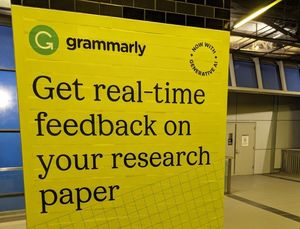We are seeing more interest in demonstrating value. Here are two rather different items on this topic.
The first is an article on ROI in the current LIBER Quarterly by Paula Kaufman, Dean of Libraries at UIUC.
University administrators are asking library directors to demonstrate their library’s value to the institution in easily articulated quantitative terms that focus on outputs rather than on traditionally reported input measures. This paper reports on a study undertaken at the University of Illinois at Urbana-Champaign that sought to measure the return on the university’s investment in its library. The study sought to develop a quantitative measure that recognizes the library’s value in supporting the university’s strategic goals, using grant income generated by faculty using library materials. It also sought to confirm the benefits of using electronic resources and the resulting impact on productivity over a 10-year period. The results of this study, which is believed to be the first of its kind, represent only one piece of the answer to the challenge of representing the university’s total return from its investment in its library. [Liber Quarterly. The Library as Strategic Investment.]
The discussion of how they settled on the approach they did was of particular interest, as it looks at what is of value to the University – research income generation, in this case – and how the contribution of the library to that might be demonstrated.
The second is a presentation [ppt] from last year’s INULS conference (Irish National and University Library Staff Conference). It is by John Wright from the University of Bangor in Wales. Bangor hit the headlines a few years ago as the University proposed major cuts in library services. The following extract was widely discussed.
“the support…from the qualified subject librarians is hard to justify in value-for-money terms at a time when the process of literature searches is substantially de-skilled by online bibliographical resources.”
John Wright repeats this quote in his presentation and talks about how the University and library arrived at this point, and more interestingly the steps they took to improve the situation. His discussion is under four heads: 1. Demonstrating Value, 2. Perception and Aesthetics, 3. Collaboration, 4. Innovation.
“Value for money”, as one of my colleagues suggested recently, seems a sterner expression than ROI.



